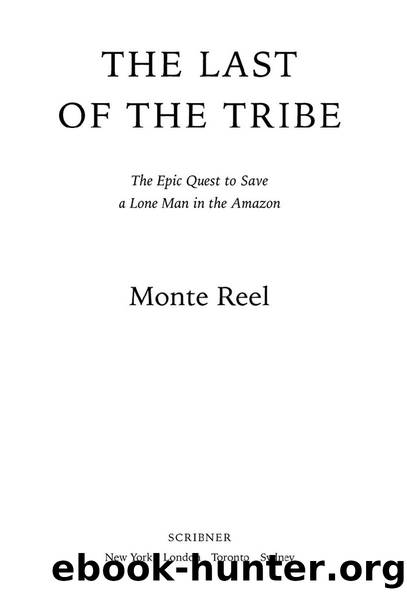THE LAST OF THE TRIBE by Monte Reel

Author:Monte Reel
Language: eng
Format: epub
Publisher: SCRIBNER
Published: 2010-07-15T00:00:00+00:00
The court understands that, as a result, the Indian will be protected and FUNAI will have time to approach him, identify his language and tribe, learn the whereabouts of his relatives and then evaluate whether it is suitable to convert the area (totally or partially) into an indigenous reserve.
With enough time, Marcelo hoped that the Indian might eventually grow comfortable with the Contact Front’s periodic presence in the forest and that he might reach out to them. The judge’s ruling bought the team members more time to cultivate a peaceful atmosphere, but they hadn’t reached Marcelo’s goal of creating an Indian reserve yet. The only real step toward that goal had been a bureaucratic one, but that alone had sparked a firestorm of questions among Brazilian officials tasked with regulating the country’s land and indigenous policies.
Protecting a tribe by protecting land was common, but what if the tribe had only one member? Was it still a tribe? Could there really be such a thing as a one-man Indian nation? The lone Indian’s culture, or what was left of it, had no hope of survival beyond his own life. So wasn’t that culture already dead?
Even within FUNAI, people were asking such questions, and few were sold on the idea that the land might eventually become a one-man reserve. “It isn’t possible to save his society anymore,” said Roque Laraia, the director of agricultural issues for the agency. Keeping the Indian isolated and “protected” from contact with outsiders was, in Laraia’s view, a form of “cruelty.”
Within the pages of Folha de S. Paulo and other newspapers, the case became a matter of debate because it cut straight to the heart of a basic moral dilemma that has confounded societies for centuries: are the rights of a small group worth protecting if more people might benefit from the elimination of those rights or protections?
Moral psychologists call it the Trolley Problem, a name that’s based on an imagined scenario that they created to illustrate the dilemma:
Imagine that a runaway trolley is rolling down a track, and ahead of it you see five workmen who don’t notice they’re in its path. You are standing at a fork in the track, and you can pull a lever to save the five workers and divert the trolley onto a second track, where only one man is standing. Do you pull the lever?
Now imagine that you are standing on a bridge, looking down on those tracks. You spot the runaway trolley hurtling toward the five workmen. Without access to the switch, the only way you can stop the trolley is to throw a heavy object in its path. The only object heavy enough to stop the trolley is a fat man standing next to you on the bridge. Do you push the man off the bridge and onto the track, killing him to save the five workers?
The answers respondents give to the Trolley Problem have proved immensely interesting to researchers. Biologist Marc Hauser and psychologists Fiery Cushman and
Download
This site does not store any files on its server. We only index and link to content provided by other sites. Please contact the content providers to delete copyright contents if any and email us, we'll remove relevant links or contents immediately.
The Lonely City by Olivia Laing(4750)
Animal Frequency by Melissa Alvarez(4395)
All Creatures Great and Small by James Herriot(4232)
Walking by Henry David Thoreau(3894)
Exit West by Mohsin Hamid(3777)
Origin Story: A Big History of Everything by David Christian(3648)
COSMOS by Carl Sagan(3554)
How to Read Water: Clues and Patterns from Puddles to the Sea (Natural Navigation) by Tristan Gooley(3407)
Hedgerow by John Wright(3275)
The Inner Life of Animals by Peter Wohlleben(3259)
How to Read Nature by Tristan Gooley(3249)
How to Do Nothing by Jenny Odell(3232)
Project Animal Farm: An Accidental Journey into the Secret World of Farming and the Truth About Our Food by Sonia Faruqi(3177)
Origin Story by David Christian(3147)
Water by Ian Miller(3128)
A Forest Journey by John Perlin(3027)
The Plant Messiah by Carlos Magdalena(2883)
A Wilder Time by William E. Glassley(2818)
Forests: A Very Short Introduction by Jaboury Ghazoul(2790)
